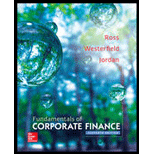
Case synopsis:
Company S is a real estate firm, whose CEO (chief executive officer) is Person R. The firm buys a real estate and rents it to the tenants. The firm gains profit every year. Before the foundation of Company S, Person R was the CEO and the founder of Company A, which is a farming operation. Company A was a failure firm, which ends up with bankruptcy. This situation made Person R to be extremely averse towards debt financing.
Hence, the company is completely financed through equity. Company S is assessing a plan to buy a huge tract of land, which would be leased to the tenant farmers. This purchase is predicted to raise the annual earnings before tax in perpetuity. Person J is the new CFO (chief financial officer) of Company S, who has found the present capital cost of the company.
Person J felt that the company will be very valuable if it adds debt in its capital structure. While evaluating whether the company could issue debt to completely finance the project, she found that it can issue bonds at a par value with the coupon rate. She also found an optimal range of capital structure between 70% equity and 30% debt to maximize its value.
Characters in the case:
- Company S
- Company A
- Person S
- Person J
Adequate information:
- If Company S moves beyond the 30% debt, the bonds issued by the company will have a lower rating and a greater coupon, as the possibility of financial distress and the associated cost will increase.
- Company S also has a corporate rate of tax.
To construct: The
Want to see the full answer?
Check out a sample textbook solution
Chapter 16 Solutions
Fundamentals of Corporate Finance
- Which of the following represents the primary goal of financial management?A) Maximizing profitsB) Minimizing costsC) Maximizing shareholder wealthD) Maximizing market sharearrow_forwardLet S = $100, K = $95, r = 8% (continuously compounded), σ = 30%, δ = 0, T = 1 year, and n = 3. Verify that the binomial option price for an American call option is $18.283. Verify that there is never early exercise; hence, a European call would have the same price. Show that the binomial option price for a European put option is $5.979. Verify that put-call parity is satisfied. Verify that the price of an American put is $6.678. Please show this step by step and include formulas so that I can follow along. thank you.arrow_forwardWhich of the following is considered a long-term financing source for a company?A) Accounts PayableB) Common StockC) Short-term loansD) Accrued Expensesarrow_forward
 Financial Accounting: The Impact on Decision Make...AccountingISBN:9781305654174Author:Gary A. Porter, Curtis L. NortonPublisher:Cengage Learning
Financial Accounting: The Impact on Decision Make...AccountingISBN:9781305654174Author:Gary A. Porter, Curtis L. NortonPublisher:Cengage Learning Intermediate Financial Management (MindTap Course...FinanceISBN:9781337395083Author:Eugene F. Brigham, Phillip R. DavesPublisher:Cengage Learning
Intermediate Financial Management (MindTap Course...FinanceISBN:9781337395083Author:Eugene F. Brigham, Phillip R. DavesPublisher:Cengage Learning





